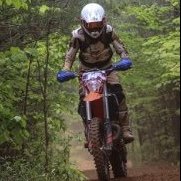Thai Red Brick Versus Autoclaved Aerated Concrete Block
-
Recently Browsing 0 members
- No registered users viewing this page.
-
Topics
-
-
Popular Contributors
-
-
Latest posts...
-
27
Crime Horrified Crew Detain Rapist Mid-Flight After Teen's Report
Yeah you arent getting out of that one in the USA -
36
John Bolton's Home Raided - Confidential National Security Docs
FFS...you lefties are lame. -
100
Video 20 Foreigners Assault Thai Shop Owner in Phuket Dispute
All these problems arise from weirdly operating police. First allowing scammers to operate. And second not keeping foreign gangs under control. I would suggest total reorganisation of responsible departments. -
0
Dems vacate endorsement Of Socialist Mayor hopeful in Minnesota.
It sounds like somethin similar to what happen to Bernie Sanders during his primary run with Clinton, a rigged process,questionable voting processes . The Socialist Fateh got shafted and he's not ashamed to let his thoughts be known. Who won the first vote, in July? * In the first ballot this weekend, Fateh got 43% of votes to Frey’s 31%. "Fateh denounced the decision as disenfranchising those who backed him. He said in a video posted to social media that 28 “party insiders” voted to take away the endorsement behind closed doors and argued the group included supporters and donors of Frey, in addition to non-Minneapolis residents. “This is exactly what Minneapolis voters are sick of: the insider games, the backroom decisions and feeling like our voice doesn’t matter in our own city,” Fateh said. https://thehill.com/homenews/campaign/5465468-minneapolis-mayor-endorsement-controversy/ https://www.fox9.com/news/dfl-strips-endorsement-omar-fateh-minneapolis-mayor * https://www.theguardian.com/us-news/2025/jul/21/omar-fateh-minneapolis-mayor-endorsements The Story is about a Hill , Fox9 local affiliate & Guardian report. -
36
John Bolton's Home Raided - Confidential National Security Docs
OK, tough guy. LOL -
179
‘It doesn’t matter now if they are children’
Being unable to control your drinking and having no responsibilities that you can drink all night is nothing to be proud of . Its OK in your teen years , but you should have grown up by now and be needing to wake up sober in the morning to be there for your family Are you just a drunken drifter with no direction in life ?
-
-
Popular in The Pub


.thumb.jpg.3ee24d9400fb02605ea21bc13b1bf901.jpg)









Recommended Posts
Create an account or sign in to comment
You need to be a member in order to leave a comment
Create an account
Sign up for a new account in our community. It's easy!
Register a new accountSign in
Already have an account? Sign in here.
Sign In Now